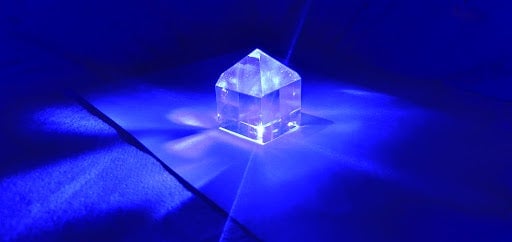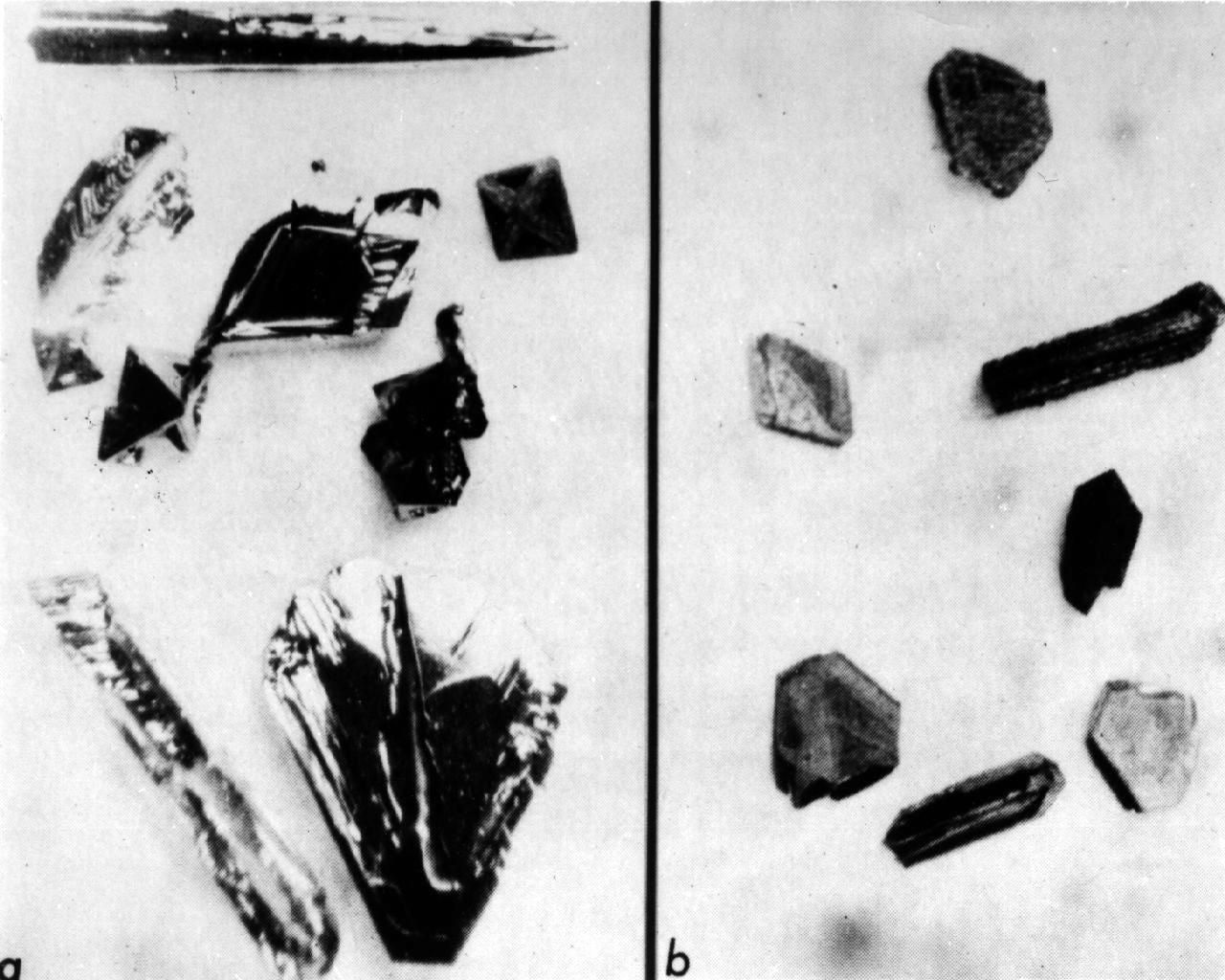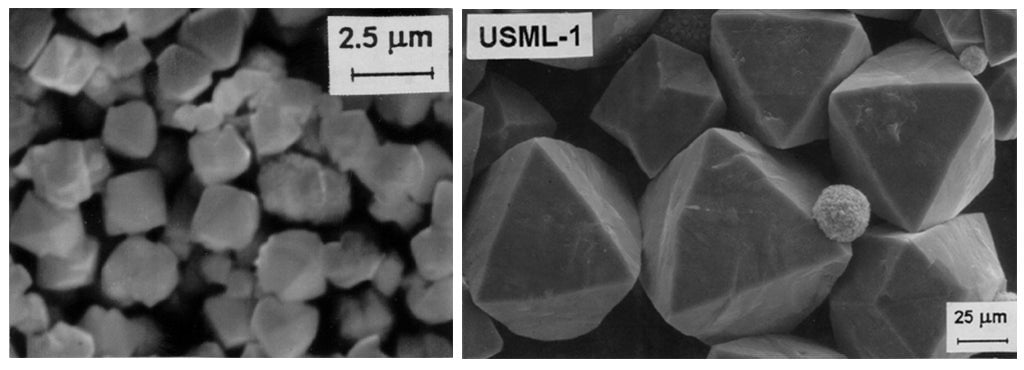Redwire sells the first manufactured goods from space
Dear readers,


Dear readers,
Welcome to Quartz’s newsletter on the economic possibilities of the extraterrestrial sphere. Please forward widely, and let me know what you think. This week: Here come the space crystals, the culture war inside SpaceX, and the SLS (almost) completes its dress rehearsal.
🚀 🚀 🚀
If we learned anything from Breaking Bad, it’s that very pure crystal can be a lucrative opportunity.
In this case, a special crystal grown onboard the International Space Station by Redwire Corporation was sold to Ohio State University. The company says it is the first ever transaction involving goods made in space.
Professor John Horack purchased a two gram sample of potassium dihydrogen phosphate (KDP) crystal, which is used to make high-powered lasers involved in everything from medicine to quantum computing, for about $4,000, a price equivalent to $2 million per kilogram. It arrived in a FedEx box in a vial the size of a bottle of eyedrops. While samples of Moon rocks have been sold at auction, and Redwire has made 3D-printed components on the ISS for NASA and others, this is the first time a product manufactured by leveraging the space environment has been sold back on Earth.
Researchers and students at the university’s Center for Electron Microscopy and Analysis will now slice the crystal into thin segments and examine its properties up close. Redwire expects the analysis will show that growing the crystal in microgravity resulted in fewer defects and a more useful product. The company, a conglomerate assembled by private equity investors AE Industrial Partners from a handful of space startups and taken public, is dedicated to expanding commercial space activities. President Andrew Rush says that this first commercial sale of a space-enabled product is “a Netscape moment” in that journey.

Redwire has about a dozen payloads onboard the ISS right now, including 3D printers; a fabricator for ZBLAN, a high-efficiency fiber optic cable; and its crystal producer. Each is a proof-of-concept effort designed to prove out both the production and the unit economics of each good.
It’s difficult to say whether this crystal is a game-changer without knowing more about its performance. A salesperson at Newlight Photonics, an existing retailer of these specialized components, said it would be impossible to price such crystals without knowing the specific application and dimensions, and doubted a space-made crystal would be economical.
Rush says his team worked through decades of research in space to find materials that were both achievable and economically interesting. The availability of the ISS as a platform for companies to do research and frequent access offered by SpaceX’s Dragon spacecraft is enabling more ambitious space manufacturing projects.
Redwire’s strategy is to work with the launch and operations infrastructure that currently exists, and Rush says that with the cooperation of NASA and the Center for Advancement of Studies in Space (CASIS), the organization that manages research on the ISS, it might be possible to scale up production of the crystal there.
But achieving meaningful production volume will mean far more infrastructure in orbit: free-flying commercial spacecraft or habitats, plus more spacecraft regularly visiting them and returning to Earth. NASA envisions that ecosystem being developed over the next decade, and Redwire is a partner in Orbital Reef, a future space station being developed by Jeff Bezos’ space company, Blue Origin.
Realizing that expansive vision of the orbital economy will require evidence, like this crystal deal, to convince investors there is money in making goods in space. If there are fleets of machines pumping out microgravity-enhanced components in orbit decades from now, this tiny chunk of inorganic material could turn out to be one of the most valuable minerals ever produced.
🌘 🌘 🌘
Imagery interlude
Scientists have been fascinated by the potential of growing crystals in space for a while now. The first attempt at doing so took place onboard the NASA’s Skylab space station in the 1970s, and the Space Shuttle also carried payloads to perform crystal growth experiments. You can get a rough sense of how space crystals are different in these photographs, which show terrestrial crystals on the left and crystals made in space on the right:


🛰🛰🛰
SPACE DEBRIS
Culture wars at SpaceX. After hundreds of SpaceX employees signed a petition calling on Elon Musk to cool it with the embarrassing and offensive tweets, the company fired at least five people involved in the effort. The retaliation may have future legal consequences for SpaceX, but it’s no surprise that despite the company’s “no assholes” rule, Musk is the only SpaceX employee allowed to go off message. The founder’s extracurricular activities (and recent sexual harassment allegations) have clearly injected a sour taste into SpaceX’s culture, but it remains to be seen how much that will affect hiring and operations. If you work at SpaceX, I’d love to talk about it, so email me or text me at 347-778-1414.
Meet a space cowboy. With United Launch Alliance winning a huge launch contract and with its new Vulcan rocket coming soon, now is a good time to examine how CEO Tory Bruno turned around the company that had the most to lose from SpaceX’s rise.
Wet ‘n wild. The fourth “wet dress rehearsal” for Boeing’s Space Launch System got closer than ever to demonstrating the enormous rocket’s complicated fueling procedures, but finished about 20 seconds early. It’s not yet clear to NASA if that’s close enough to begin prepping for launch, but engineers said they were pleased with the performance of the vehicle as super-chilled pressurized propellants were pumped onboard.
South Korea has space access. The Korea Aerospace Research Institute launched a Nuri rocket this week and for the first time successfully deployed a small satellite, a major milestone in the country’s plan to boost its space industry and lessen its dependence on foreign launchers.
Inmarsat and ViaSat are closer to closing the deal. ViaSat’s shareholders approved a $3.7 billion acquisition of Inmarsat, which executives believe will result in a satellite telecom company better able to compete with Starlink, OneWeb, and other new internet satellite networks. Now the main obstacle is regulatory approval, which SpaceX has asked the FCC to deny.
Your pal,
Tim
This was issue 138 of our newsletter. Hope your week is out of this world! Please send your thoughts on SpaceX’s internal conflicts, timeline for the first flight of ULA’s Vulcan, tips, and informed opinions to [email protected].